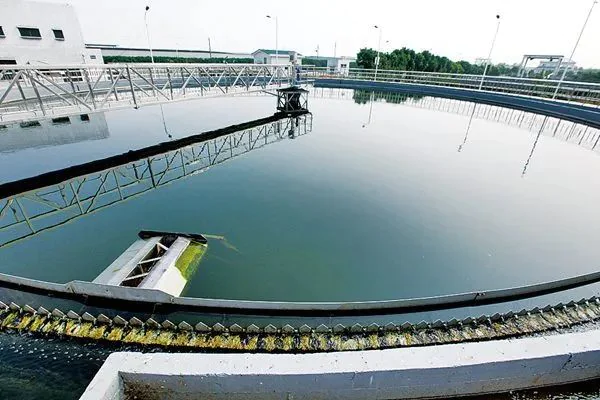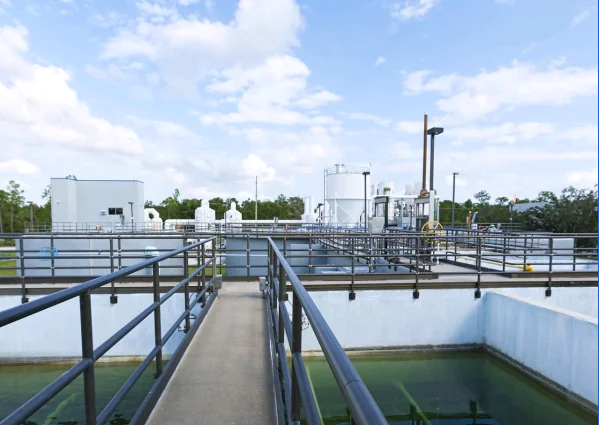As wastewater discharge standards are getting stricter around the world, many factories face a common problem: COD levels in treated water are often too high. This is especially true for industries like livestock farming, slaughterhouses, and food processing, where COD is naturally high.
To help global users solve this issue, this article looks at two main causes of high COD in effluent:
- Problems with raw water quality
- Problems inside the biological treatment system
We also give useful solutions to help wastewater treatment plants and industrial users fix the problem fast.
Raw Water Problems: High Load, Difficult to degrade, and Toxic
1.1 COD in raw water is too high,and the pre-treatment load is insufficient
If COD in the raw water is very high, but pre-treatment like coagulation, sedimentation, or air flotation does not work well, then too much organic matter enters the biological system.
✅ The system becomes overloaded. ✅ COD removal becomes difficult. ✅ Treated water COD stays high.
1.2 Many hard-to-degrade organics
If the water has big molecule pollutants like aromatic hydrocarbons, polycyclic organic compounds, long-chain fatty acids, etc, if not effectively pretreated (such as hydrolysis acidification or advanced oxidation), will be difficult for microorganisms to decompose after entering the aerobic system, and will also cause COD residue.
1.3 Toxic and harmful substances in the water
Heavy metals, surfactants, or disinfectants can hurt microbes.
✅ Microbial activity drops. ✅ The treatment system becomes less effective. ✅ COD goes up.
1.4 pH too low/high or temperature too low
- pH outside 6–9 will harm enzyme activity in microbes.
- Temperature under 15°C slows down microbial growth. It significantly reduces the metabolic rate of microorganisms and affects the efficiency of organic matter decomposition.

Biological System Problems: Operation Settings Are Key
2.1 Sludge aging or swelling, low biological activity
- Old sludge: Sludge is not discharged in time. Microbes become weak.
- Non filamentous bacterial expansion: loose sludge structure, poor settling ability, and reduced effective bacterial count; Both of these types of problems can lead to a decrease in COD treatment capacity.
2.2 Sudden changes in flow or pollution
If water volume or COD level changes quickly, the system cannot react in time.
✅ This causes overload. ✅ COD rises in the effluent.
2.3 Hydrolysis and acidification not enough
For wastewater containing high concentrations of macromolecular organic compounds, the hydrolysis and acidification retention time is insufficient or the efficiency is low, which fails to convert complex organic compounds into small molecules, resulting in difficulties in subsequent aerobic treatment.
2.4 Dissolved oxygen (DO) too low
In the aerobic tank, if DO is below 2 mg/L:
✅ Microbes breathe slowly. ✅ Organic matter is not oxidized fast. ✅ COD stays high.
2.5 Wrong reflux sludge ratio
- Low internal reflux: Less carbon source for denitrification.
- Low external reflux: Fewer microbes in the system. ✅ COD removal drops.
2.6 Poor control settings
Problems like:
- Low sludge concentration
- Not enough retention time
- Poor aeration performance. ✅ All lead to lower COD treatment ability.

Practical Tips: How to Improve COD Removal Quickly?
| Problem Type | Suggested Solution |
| High COD in influent | Improve pre-treatment processes, such as air flotation, coagulation, or anaerobic hydrolysis. |
| Hard-to-degrade pollutants | Add advanced oxidation (like Fenton or ozone), or extend hydrolysis time. |
| Inhibitory substances | Set up influent monitoring system and add neutralizing agents to protect microbes. |
| Low microbial activity | Discharge old sludge regularly, control sludge age, and add nutrients. |
| Low dissolved oxygen (DO) | Upgrade aeration system, add more aeration heads, or increase blower frequency. |
| Wrong return sludge ratio | Adjust internal and external return rates to ensure enough carbon source and active sludge. |
